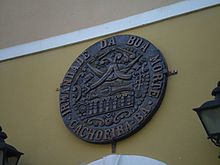Order of Our Lady of the Good Death
| Irmandade da Nossa Senhora da Boa Morte | |
 |
|
| Formation | 19th century |
|---|---|
| Founded at | Salvador, Bahia, Brazil |
| Type | Catholic-Candomblé religious order |
The Sisterhood of Our Lady of the Good Death (Irmandade da Nossa Senhora da Boa Morte) is a small but renowned Afro-Catholic religious group in the state of Bahia, Brazil.
Founded in the early 19th century as a Church-sponsored beneficent Sisterhood for female African slaves and former slaves, it became one of the oldest and most respected worship groups for Candomblé, the major African-based religion in Brazil. Presently reduced to about thirty members (from 200 or so at its height), most of them over fifty, it still attracts worshipers every year, especially at its August festival.
The history of the Irmandade da Boa Morte ("Sisterhood of the Good Death"), a religious confraternity devoted to the Assumption of the Virgin, is part of the history of mass importation of blacks from the African coast to the cane-growing catchment area around the port of Salvador, Bahia, known as the Recôncavo Baiano. Iberian adventurers built several towns in this area, one of them being Cachoeira, which was the second most important economic center in Bahia for three centuries.
Confraternities proliferated during the 19th century, when the country was independent but still lived under the regime of slavery. For each profession, race and nation — because the African slaves and their descendants came from different places with different cultures — a separate irmandade was founded. There were confraternities for the rich, poor, musicians, blacks, whites, etc. There were almost none for women and in the male confraternities women entered as dependents to ensure they would receive benefits from the corporation after the death of their husbands. For the confraternity to operate, says historian João José Reis, a church had to welcome it and its statutes had to be approved by an ecclesiastical authority.
In a patriarchal society marked by racial and ethnic differences, the confraternity is made up exclusively of black women, which gives this Afro-Catholic manifestation — as some consider it — a certain fame. It is known both as an expression of Brazilian baroque Catholicism, with its distinctive street processions, and for its tendency to include in religious festivals profane rituals punctuated by a lot of samba and banqueting.
...
Wikipedia
